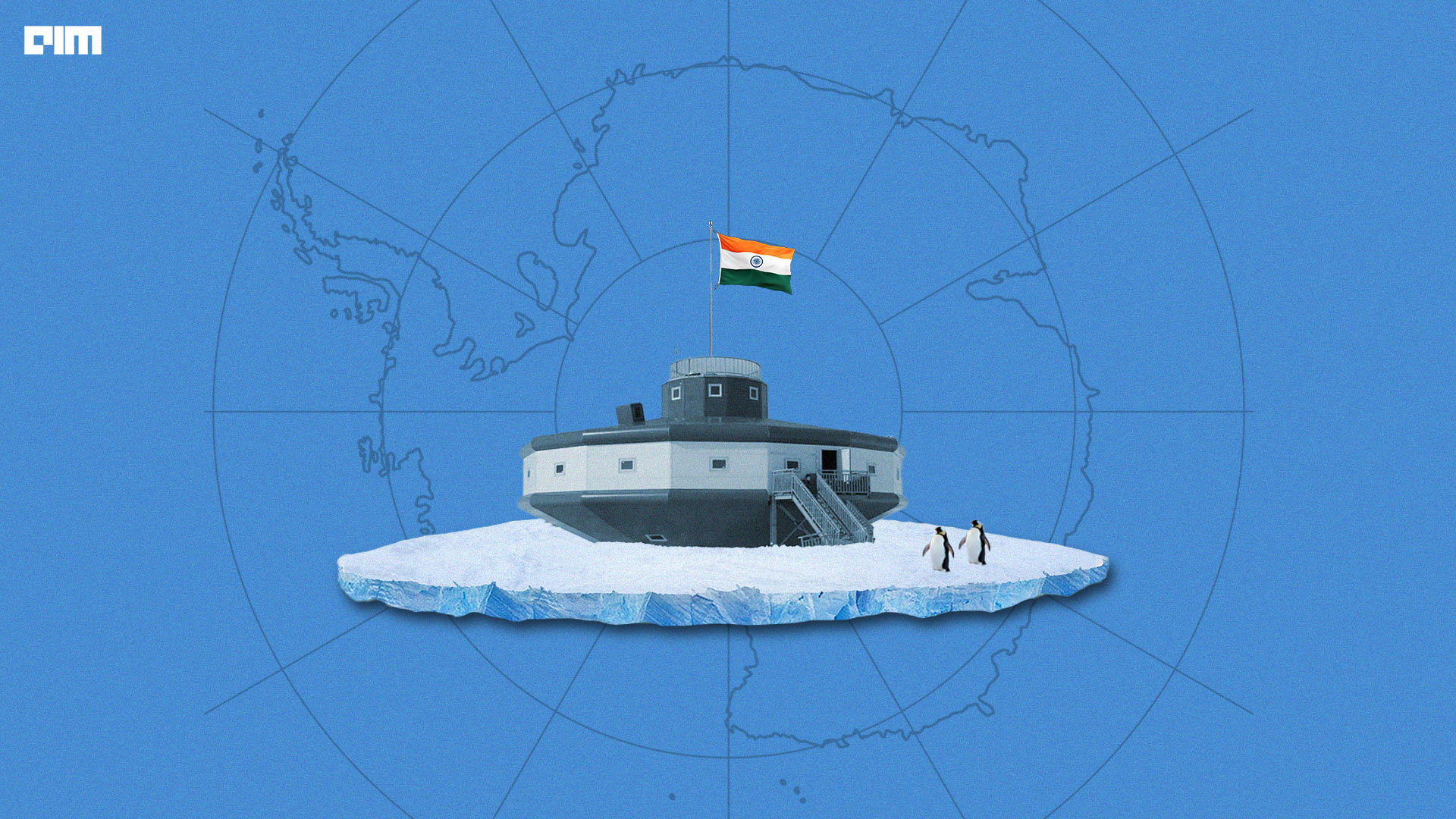ISRO has a ground station in the heart of the seemingly-other-worldly expanse of Antarctica, at the Bharati Station The post What�s ISRO Doing in the Middle of Antarctica? appeared first on Analytics India Magazine.

In the heart of the seemingly-other-worldly expanse of Antarctica lies an outpost belonging to the Indian Space Research Organisation (ISRO), marking the agency�s presence beyond the habitable lanes of Bengaluru and Hyderabad�in an environment where temperatures range between -89 degrees Celsius in winter to -25 degrees Celsius in summer.
The Antarctica Ground Station for Earth Observation Satellites (AGEOS), situated at Bharati Station in the Larsemann Hills was commissioned in August 2013 and can house 72 personnel during summers.�
It operates as a crucial link in ISRO�s data acquisition network, to enhance satellite connectivity (especially from polar orbits), data reception(enabling real-time reception) and processing from various Indian Remote Sensing (IRS) satellites like CARTOSAT-2 Series, SCATSAT-1, RESOURCESAT-2/2A, and CARTOSAT-1. This data is then seamlessly transmitted to the National Remote Sensing Centre (NRSC) in Shadnagar, near Hyderabad, marking a crucial link in India�s Earth Observation (EO) missions.
Why Antarctica?
Its strategic positioning provides a unique advantage, allowing up to 10 passes per day for satellite observation, offering comprehensive coverage crucial for various sectors, including agriculture, water resources, urban planning, disaster management, and more.
The ground station�s location in Antarctica is strategically chosen because of its unique position close to the South Pole�which enables increased satellite visibility and data reception up to 10 satellite passes per day from satellites in polar orbits.

As satellites orbit the Earth, those in polar orbits pass over the poles multiple times a day. Stations in Antarctica, being closer to the South Pole, can intercept these passes more effectively compared to stations located in higher latitudes. This increased frequency of satellite passes amplifies the ground station�s capacity to receive crucial data which proves vital across various sectors like agriculture, water resources, urban planning, and disaster management.�
What else does AGEOS do?
The extended S/X/Ka antenna system at AGEOS plays a pivotal role in supporting ISRO�s remote sensing missions, enhancing the country�s capabilities in remote sensing. This tri-band approach also separates the national space agency from agencies or entities from other countries, elevating it into a league of its own. Manned by a team of ISRO engineers stationed at Bharati, the facility ensures seamless operations, contributing significantly to the success of ISRO�s endeavours in remote sensing.
The facility is proving to be a critical resource with the increasing number of launches and satellites in orbit while only a few ground stations exist. It is also used to track any launch aboard the PSLV through antennas.
Moreover, AGEOS not only serves ISRO�s remote sensing missions but also houses a C-Band station at the National Centre for Antarctica & Ocean Research (NCAOR) in Goa, India. This station serves as a dedicated communication link, facilitating round-the-clock operations and supporting vital applications like video conferencing, streaming, and internet browsing.
India has also commissioned the tender for an advanced Ka-band satellite link, significantly enhancing connectivity and enabling high-data-transfer satellite internet services. The colossal significance of this venture reverberates in its vital role for the upcoming NASA-ISRO Synthetic Aperture Radar (NISAR) space mission, a collaborative effort between Indian and United States scientists�which will amass extensive data regarding minute changes in ice sheets and rising sea levels, crucial for understanding the ramifications of global warming. The anticipated data load from this mission could surpass a staggering 80 terabytes per day, which will be shouldered by the Ka-band satellite link.
Apart from these primary functions, this station plays a key role in aiding India�s scientific community in conducting research at Maitri, another Indian station in Antarctica. This comprehensive infrastructure and connectivity demonstrate India�s commitment to scientific exploration and advancement even in the most extreme environments on Earth.

The relentless operations and maintenance of AGEOS are upheld by a team of ISRO engineers deputed to Bharati Station�who ensure round-the-clock monitoring, maintenance, and troubleshooting of the technological infrastructure to ensure optimal functionality.
Additionally, the new Ka-band installation at the Bharati station further elevates India�s capabilities in remote sensing and brings the other Indian station on the southern pole� Maitri, closer through stable internet, marking a significant leap in connectivity and scientific collaboration amidst Antarctica�s icy vastness and mainland India.
The post What�s ISRO Doing in the Middle of Antarctica? appeared first on Analytics India Magazine.











